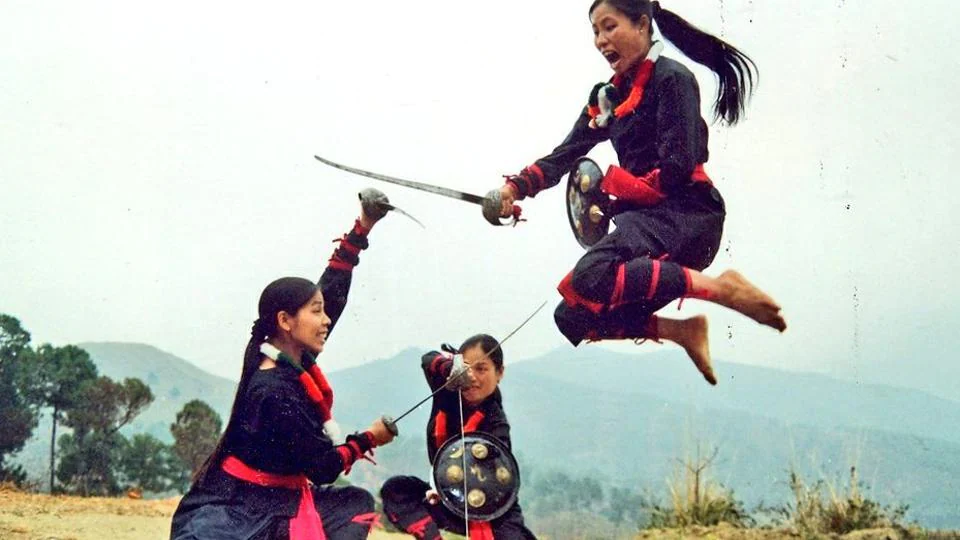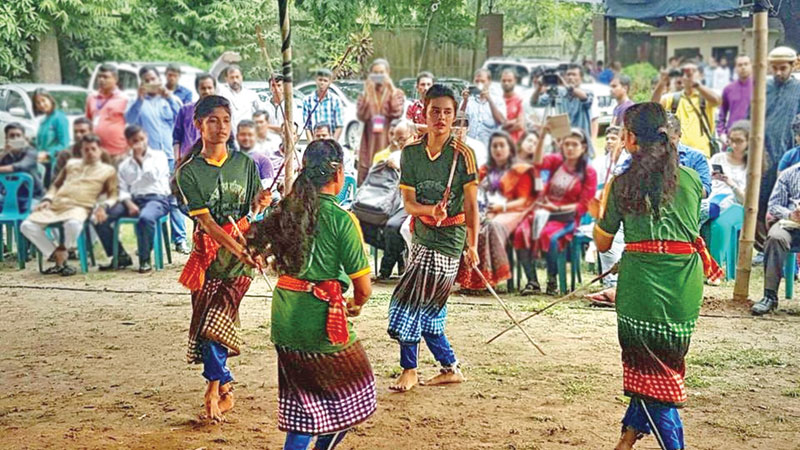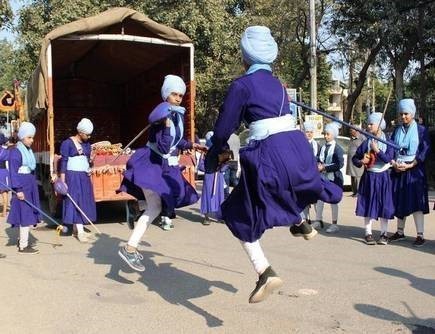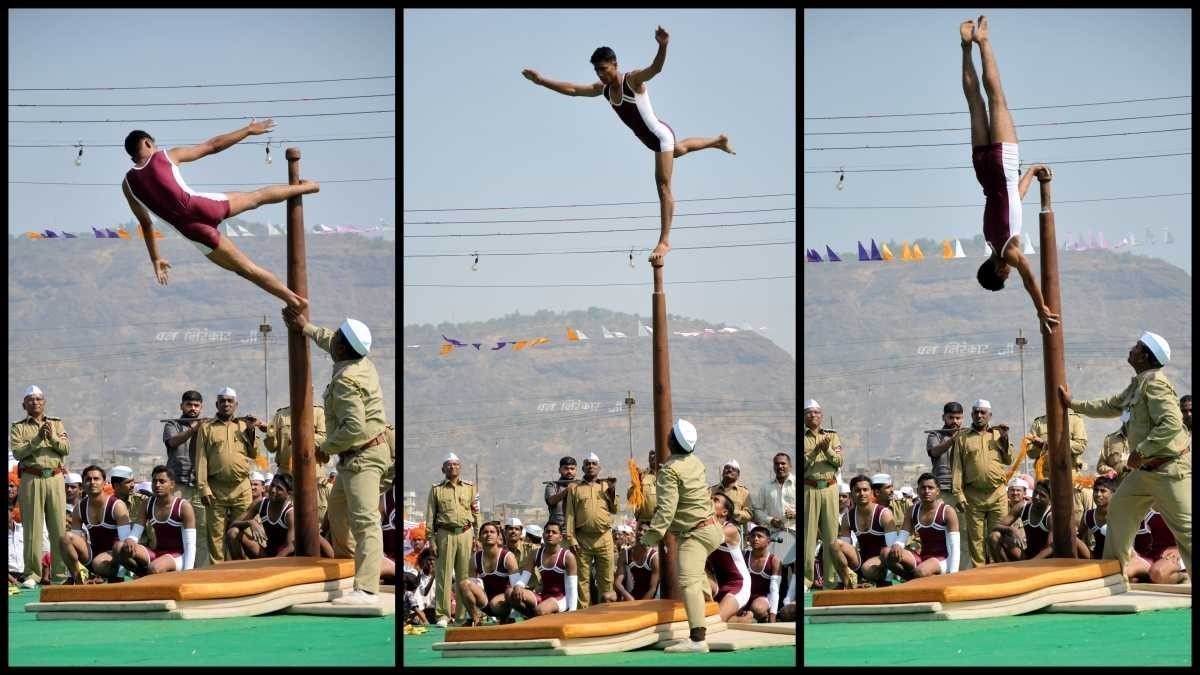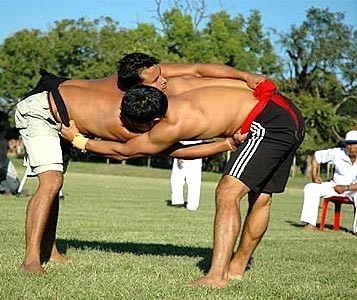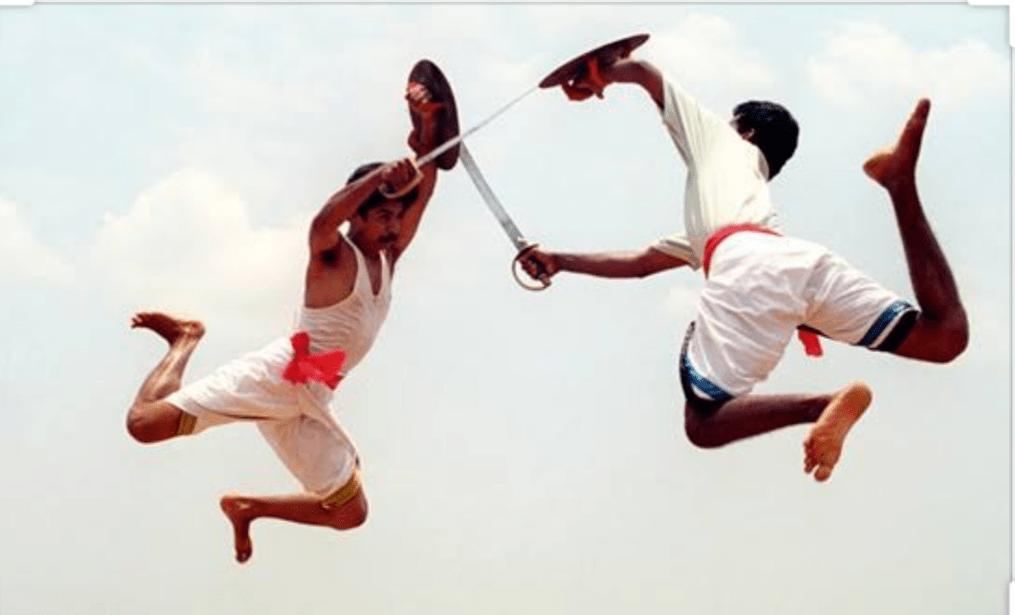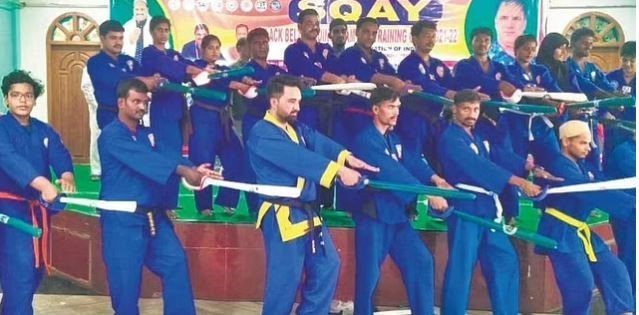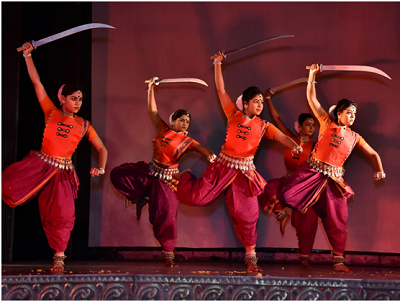Indian Economy
Indian Patent Regime clash with the U.S. Norms
For Prelims: Special Report 301, IPR, Doha Declaration, Priority watch list, Indian Patent Act
For Mains: IPR related issues of India, Indian Patent Act
Why in News?
The U.S. Trade Representative highlighted IP challenges in India in its annual Special 301 report.
- The report highlighted a range of issues in domains ranging from copyright and piracy to trademark counterfeiting and trade secrets, saying that India remained one of the world’s most challenging major economies with respect to protection and enforcement of IP.
- It has decided to retain India on its Priority Watch List along with six other countries- Argentina, Chile, China, Indonesia, Russia and Venezuela.
- U.S. trade law (“Special 301”) requires an annual review of intellectual property protection and market access practices in foreign countries.
- Trading partners that currently present the most significant concerns regarding IP rights are placed either on the Priority Watch List or Watch List.
What is the Indian patent regime?
- A patent is an exclusive set of rights granted for an invention, which may be a product or process that provides a new way of doing something or offers a new technical solution to a problem.
- Indian patents are governed by the Indian Patent Act of 1970. Under the act, patents are granted if the invention fulfils the following criteria:
- It should be novel
- It should have inventive step/s or it must be non-obvious
- It should be capable of Industrial application
- It should not attract the provisions of sections 3 and 4 of the Patents Act 1970.
- India has gradually aligned itself with international regimes pertaining to intellectual property rights.
- It became a party to the Trade-Related Aspects of Intellectual Property Rights (TRIPS) Agreement following its membership to the World Trade Organization on 1st January, 1995.
- Following this, it amended its internal patent laws to comply with TRIPS, most notably in 2005, when it introduced pharmaceutical product patents into the legislation.
- Other IPR related conventions
- India is also a signatory to several Intellectual Property Rights (PR) related conventions, including the Berne Convention, which governs copyright, the Budapest Treaty, the Paris Convention for the Protection of Industrial Property, and the Patent Cooperation Treaty (PCT), all of which govern various patent-related matters.
- The original Indian Patents Act did not grant patent protection to pharmaceutical products to ensure that medicines were available to the masses at a low price.
- This was based on the recommendations of a 1959 commission chaired by the jurist Rajagopala Ayyangar.
- Patent protection of pharmaceuticals was re-introduced after the 2005 amendment to comply with TRIPS.
What are the Indian Issues Highlighted by USTR?
- Patent issues continued “to be of particular concern in India,” highlighting the threat of patent revocations, lack of presumption of patent validity and narrow patentability criteria as issues which “impact companies across different sectors”.
- The issue of narrow patentability criteria was again raised in relation to Section 3(d) of the Indian Patent Act, with the report saying that in the pharmaceutical sector, the United States “continued to monitor the restriction on patent-eligible subject matter in Section 3(d) of the Indian Patents Act and its impacts.
What do Section 3 and section 3 (d) of Indian Patent deal with?
- Section 3 deals with what does not qualify as an invention under the Act.
- Section 3(d) in particular excludes “the mere discovery of a new form of a known substance which does not result in the enhancement of the known efficacy of that substance
- or the mere discovery of any new property or new use for a known substance
- or of the mere use of a known process, machine or apparatus unless such known process results in a new product
- or employs at least one new reactant” from being eligible for protection under patent law.
- Section 3(d) prevents what is known as “evergreening” of patents.
- It is a corporate, legal, business, and technological strategy for extending/elongating the term of a granted patent in a jurisdiction that is about to expire, in order to retain royalties from them, by taking out new patents.
- According to the Committee’s report, Section 3(d) allows for generic competition by patenting only novel and genuine inventions.
- The seminal judgment in the case Novartis vs. Union of India (2013), upheld the validity of section 3(d).
What is the Semi Judgement in Novartis vs. Union of India?
- In this case, pharmaceutical company Novartis filed a patent for the final form of cancer drug Gleevec, which was challenged in the Supreme Court.
- The Supreme Court held that Gleevec was merely a beta crystalline form of a known drug, namely, i matinib mesylate, and did not differ significantly in properties with regard to efficacy. Hence, it could not be patented in India.
- The judgment also says that the section 3 complies with the TRIPS agreement and the Doha Declaration.
- The Doha Declaration on the TRIPS Agreement and Public Health was adopted on in November 2021, by the WTO member states.
- This declaration recognises the “gravity of public health problems affecting developing and least developed nations” and stresses the need for TRIPS to be part of the wider national and international action to address these problems.
- The declaration points out that the agreement “can and should be interpreted and implemented in a manner supportive of WTO members’ right to protect public health and, in particular, to promote access to medicines for all.”
- These flexibilities include the right to grant compulsory licenses and the grounds for such licenses,
- the right to determine what “constitutes a national emergency or other circumstances of extreme urgency, including public health crises”
- and the right to establish its own regime for the exhaustion of intellectual property rights.
- The Doha Declaration on the TRIPS Agreement and Public Health was adopted on in November 2021, by the WTO member states.
- Compulsory licenses can be invoked by a state in public interest, allowing companies apart from the patent owner to produce a patented product without consent.
Way Forward
- India must not compromise on the patentability criteria under Section 3(d) since as a sovereign country it has the flexibility to stipulate limitations on grants of patents in consistence with its prevailing socio-economic conditions.
- This ensures the growth of generic drug makers and the public’s access to affordable medicines.
- India should resolve its differences with the U.S. regarding the disqualification of incremental inventions through bilateral dialogue.
- The member countries of WTO make full use of the policy space available in the TRIPS agreement by adopting and applying rigorous definitions of invention and patentability that curtail ‘evergreening’ and ensure that patents are only awarded when genuine innovation has occurred.
- Through Section 3(d), India strives to balance the international patent obligations and its commitments to protect and promote socio-economic welfare and public health.
International Relations
India and Russia Relationship
For Prelims: Brahmos Missile, Indra exercise, Kamov ka-226, S-400 Triumf
For Mains: Changing trends in Indo-Russia relations
Why in News?
Recently India and Russia celebrated the 75th anniversary of their diplomatic relations. This has come amid Russia-Ukraine war.
What are the Different Aspects of Indo-Russia Relations?
- Historical Background:
- The India and Russia ties have been a longstanding relation. Since the signing of the “Declaration on the India-Russia Strategic Partnership” in October 2000, India-Russia ties have acquired a qualitatively new character with enhanced levels of cooperation in almost all areas of the bilateral relationship including political, security, defence, trade and economy, science and technology, and culture.
- During the Cold War, India and the Soviet Union had a strong strategic, military, economic and diplomatic relationship. After the Dissolution of the Soviet Union, Russia inherited its close relationship with India which resulted in both nations sharing a Special Strategic Relation.
- However, the relations have taken a steep downfall over the past few years, especially in the post-Covid scenario. One of the biggest causes for this is Russia’s close relations with China and Pakistan, which have caused many geopolitical issues in the past few years for India.
- Political Relations:
- The Annual Summit meeting between the Prime Minister of India and the President of the Russian Federation is the highest institutionalised dialogue mechanism in the strategic partnership between India and Russia.
- Prime Minister Narendra Modi and President Vladimir Putin held their first informal Summit in the city of Sochi in the Russian Federation in 2018.
- In 2019, President Putin signed the Executive Order on awarding PM Narendra Modi Russia’s highest state decoration – The order of St Andrew the Apostle. The order was presented to PM for his distinguished contribution to the development of a privileged strategic partnership between Russia and India and friendly ties between the Russian and Indian peoples
- Two Inter-Governmental Commissions – one on Trade, Economic, Scientific, Technological and Cultural Cooperation (IRIGC-TEC), and another on Military-Technical Cooperation (IRIGC- MTC), meet annually.
- Trade Relations:
- The two countries intend to increase bilateral investment to US$50 billion and bilateral trade to US$30 billion by 2025.
- Bilateral trade during FY 2020 amounted USD 8.1 billion.
- From 2013 to 2016 there was a major decline in the trade percentage between the two countries. However, it increased from 2017 onwards and a constant increase was noticed in 2018 and 2019 as well.
- Defence and Security Relations:
- India-Russia military-technical cooperation has evolved from a buyer-seller framework to one involving joint research, development and production of advanced defence technologies and systems
- Both countries regularly conduct the Tri-Services exercise ‘INDRA‘.
- The joint military programmes between India and Russia include:
- BrahMos cruise missile programme
- 5th generation fighter jet programme
- Sukhoi Su-30MKI programme
- Ilyushin/HAL Tactical Transport Aircraft
- KA-226T twin-engine utility helicopters
- some frigates
- The military hardware purchased/leased by India from Russia includes:
- S-400 Triumf
- Kamov Ka-226 200 to be made in India under the Make in India initiative
- T-90S Bhishma
- INS Vikramaditya aircraft carrier programme
- Russia also plays a very important role in assisting the Indian Navy with its submarine programmes:
- Indian Navy’s first submarine, ‘Foxtrot Class’ came from Russia
- India is dependent on Russia for its nuclear submarine programme
- INS Vikramaditya, the sole aircraft carrier operated by India, is also Russian in origin.
- Nine of the fourteen conventional submarines operated by India are Russian.
What are Other Important Areas of Relations between India and Russia?
- Nuclear Relations:
- Russia is an important partner for India in the area of peaceful use of nuclear energy. It recognizes India as a country with advanced nuclear technology with an impeccable non-proliferation record.
- Kudankulam Nuclear Power Plant (KKNPP) is being built in India .
- Both India and Russia are implementing Rooppur Nuclear Power Project in Bangladesh
- Space Exploration:
- Both sides cooperate in the peaceful uses of outer space, including satellite launches, GLONASS navigation system, remote sensing and other societal applications of outer space.
- An MoU ISRO and ROSCOSMOS on Joint Activities in the field of Human Spaceflight Programme was signed during the 19th Bilateral Summit.
- Science and Technology:
- The Working Group on Science and Technology functioning under IRIGC-TEC, the Integrated Long-Term Programme (ILTP) and the Basic Science Cooperation Programme are the three main institutional mechanisms for bilateral Science and Technology cooperation, while the Science Academies of the two countries promote inter-academy exchanges.
- A number of new initiatives in this sphere include India-Russia Bridge to Innovation, cooperation in telemedicine, creation of a Traditional Knowledge Digital Library (TKDL), and the Russia India Network (RIN) of universities.
- Cultural Relations:
- About 20 Russian Institutions, including leading universities and schools, regularly teach Hindi to about 1500 Russian students
- Apart from Hindi, languages such as Tamil, Marathi, Gujarati, Bengali, Urdu, Sanskrit and Pali are taught in Russian Institutions
- Indian dance, music, yoga and Ayurveda are among few other interests that people of Russia enjoy.
What is the Significance of Russia for India?
- Balancing China: The Chinese aggression in the border areas of eastern Ladakh, brought India-China relations to an inflection point, but also demonstrated that Russia can contribute to defusing tensions with China.
- Russia organized a trilateral meeting among the foreign ministers of Russia, India, and China following deadly clashes in the Galwan Valley in the disputed territory of Ladakh.
- Emerging New Sectors of Economic Engagement: Apart from traditional areas of cooperation such as weapons, hydrocarbons, nuclear energy, and diamonds, new sectors of economic engagement are likely to emerge — mining, agro-industrial, and high technology, including robotics, nanotech, and biotech.
- India’s footprint in the Russian Far East and in the Arctic is set to expand. Connectivity projects may get a boost too.
- Combating Terrorism: India and Russia are working to close the gap on Afghanistan and are calling for early finalization of the Comprehensive Convention on International Terrorism.
- Support At Multilateral Forums: Additionally, Russia supports India’s candidacy for permanent membership of a reformed United Nations Security Council and of the Nuclear Suppliers Group.
- Russia’s Military Exports: Russia has been one of the largest arms exporters to India. Even as Russia’s share in India’s arms imports fell by over 50% in the last five-year period compared to the previous five years (2011–2015).
- In the last 20 years, India imported arms and weapons worth USD 35 billion from Russia, according to the Stockholm International Peace Research Institute which tracks global arms trade.
Way Forward
- Russia To Provide Timely Maintenance Support: Timely supply of spares and support to the large inventory of Russian hardware in service with the Indian military has been a major issue from India.
- To address this, Russia has made legislative changes allowing its companies to set up joint ventures in India to address it following an Inter-Governmental Agreement signed in 2019.
- This agreement needs to be implemented in a time-bound manner.
- Acknowledging Importance of Each Other: Russia will remain a key defense partner for India for decades to come.
- On the other hand, Russia and China are currently in a quasi-alliance setup. Russia repeatedly reiterates that it does not see itself as anybody’s junior partner. That’s why Russia wants India to act as a balancer.
- Joint Military Production: The two countries have been discussing how they can cooperate in using India as a production base for exporting to third countries Russian-origin equipment and services.
Indian Polity
One Candidate One Constituency
For Prelims: One Candidate One Constituency, Election Commission, Representation of the People Act
For mains: Issue with a Candidate contests for two constituencies
Why in News?
Recently, the Chief Election Commissioner asked the Ministry of Law & Justice to limit the seats from which a candidate can contest to just one.
- It had also recommended a ban on exit polls and opinion polls and said there should be some restriction on conducting and disseminating the results of opinion polls right from the day of the first notification of an election till the completion of the election in all its phases.
What is the Background?
- As per Section 33(7) of the RPA (Representation of the People Act), 1951, one candidate can contest from a maximum of two constituencies.
- More constituencies were allowed until 1996 when the RPA was amended to set the cap at two constituencies.
- Since 1951, many politicians have used this factor to contest from more than one seat – sometimes to divide the opponent’s vote, sometimes to profess their party’s power across the country, sometimes to cause a ripple effect in the region surrounding the constituencies in favour of the candidate’s party and all parties have exploited Section 33(7).
What are the Issues?
- One Act Negates another:
- Since no Candidate can represent two Constituencies, the idea of this system appears to be illogical and ironic.
- The irony behind Section 33(7) of the RPA is that it leads to a situation where it would be negated by another section of the same Act – specifically, Section 70.
- While 33(7) allows candidates to contest from two seats, Section 70 bars candidates from representing two constituencies in the Lok Sabha/state. Assembly.
- By-election Strains Public Exchequer:
- After sacrificing one of the Constituencies, a by-election is automatically triggered immediately after the general election.
- For example, in 2014, after PM Narendra Modi won both Vadodara and Varanasi, he vacated his seat in Vadodara, forcing a by-election there.
- Lakhs of taxpayer rupees need to be shelled out because of a by-election that could have been easily avoided.
- Before 1994, when candidates could contest from even three seats, the financial burden was even heavier.
- After sacrificing one of the Constituencies, a by-election is automatically triggered immediately after the general election.
- Voters Lose Interest:
- Repeated elections are not only unnecessary and costly, but they will also cause voters to lose interest in the electoral process.
- Invariably, the by-election would most likely see fewer voters turn out to vote when compared to the first election a few days earlier.
What are the Points in Favour of Contesting two Seats?
- The system of one candidate, two constituencies provides a “wider choice to the polity as well as candidates”.
- Doing away with the provision could cause an infringement of the rights of the candidates contesting elections as well as curtail choice of candidates to the polity.
What are the Recommendations of the Election Commission?
- The Election Commission recommended amending Section 33(7) so as to allow one candidate to contest from only one seat.
- It did so in 2004, 2010, 2016 and in 2018.
- A system should be devised wherein if a candidate contested from two constituencies and won both, then he or she would bear the financial burden of conducting the subsequent by-election in one of the constituencies.
- The amount would be Rs 5 lakh for a Vidhan Sabha election and Rs 10 lakh for a Lok Sabha election.
What are Exit & Opinion polls?
- An opinion poll is a pre-election survey to gather voters’ views on a range of election-related issues.
- An exit poll, on the other hand, is conducted immediately after people have voted, and assesses the support for political parties and their candidates.
Why is the Election Commission (EC) against these polls?
- Both kinds of polls can be controversial if the agency conducting them is perceived to be biased.
- The projections of these surveys can be influenced by the choice, wording and timing of the questions, and by the nature of the sample drawn.
- Political parties often allege that many opinion and exit polls are motivated and sponsored by their rivals, and could have a distorting effect on the choices voters make in a protracted election, rather than simply reflecting public sentiment or views.
Way Forward
- “One person, one vote” is the dictum that has been a founding principle of Indian democracy. Perhaps it is time to modify and expand that principle to “One person, one vote; one candidate, one constituency.
UPSC Civil Services Examination, Previous Year Question (PYQ)
Q. Consider the following statements: (2020)
- According to the Constitution of India, a person who is eligible to vote can be made a minister in a State for six months even if he/she is not a member of the Legislature of that State.
- According to the Representation of People Act, 1951, a person convicted of a criminal offence and sentenced to imprisonment for five years is permanently disqualified from contesting an election even after his release from prison.
Which of the statements given above is/are correct?
(a) 1 only
(b) 2 only
(c) Both 1 and 2
(d) Neither 1 nor 2
Ans: (d)
Exp:
- According to Article 164 of the Constitution, a minister who is not a member of the state legislature for any period of six consecutive months shall cease to be a minister. The provision allows a non-legislator to occupy a post in the council of ministers, including the office of the chief minister for six months. Within six months, he must become a member (either by election or by nomination) of either House of the state legislature, otherwise, he ceases to be minister.
- As to become a member of the state legislature one must be not less than 30 years of age in the case of the legislative council and not less than 25 years of age in the case of the legislative assembly. Hence, statement 1 is not correct.
- According to the Section 8(3) of the Representation of People Act, 1951, a person convicted of any offence and sentenced to imprisonment for not less than two years shall be disqualified for contesting an election (MLA or MP) from the date of such conviction and shall continue to be disqualified for a further period of six years since his release. Hence, statement 2 is not correct. Therefore, option (d) is the correct answer.
Governance
Zonal Councils
For Prelims: Zonal Councils, its structure, objectives and functions
For Mains: Cooperative Federalism, States Reorganisation Act of 1956
Why in News?
Recently, the Minister of Home Affairs chaired the 25th meeting of the Western Zonal Council at Diu.
What are the Issues discussed in the Meeting?
- Improvement of banking services in rural areas.
- Monitoring of rape and sexual offences cases against women and children, implementation of Fast Track Courts for such cases.
- Verification of identity of Marine fishermen in high seas.
- Development of local contingency plan by coastal States for Mass Rescue Operation in high seas and encouragement of Make in India initiative through Preference in Public Procurement.
- Various issues related to boundary, security, infrastructure transport, and industries pertaining to western States.
What are Zonal Councils?
- About:
- Zonal Councils are the statutory (and not the constitutional) bodies.
- They are established by an Act of the Parliament, that is, States Reorganisation Act of 1956.
- The act divided the country into five zones- Northern, Central, Eastern, Western and Southern and provided a zonal council for each zone.
- While forming these zones, several factors have been taken into account which include:
- The natural divisions of the country.
- The river systems and means of communication.
- The cultural and linguistic affinity.
- The requirements of economic development, security and law and order.
- In addition to the above mentioned Zonal Councils, a North-Eastern Council was created by a separate Act of Parliament, the North-Eastern Council Act of 1971.
- Its members include Assam, Manipur, Mizoram, Arunachal Pradesh, Nagaland, Meghalaya, Tripura and Sikkim.
- These are advisory bodies that make recommendations with regard to any matter of common interest in the field of economic and social planning between the Centre and States border disputes, linguistic minorities, inter-State transport or matters connected with the reorganisation of States.
- Composition:
- The Northern Zonal Council: It comprises the States of Haryana, Himachal Pradesh, Jammu & Kashmir, Punjab, Rajasthan, National Capital Territory of Delhi and Union Territory of Chandigarh,
- The Central Zonal Council: It comprises the States of Chhattisgarh, Uttarakhand, Uttar Pradesh and Madhya Pradesh,
- The Eastern Zonal Council: It comprises the States of Bihar, Jharkhand, Orissa, Sikkim and West Bengal,
- The Western Zonal Council: It comprises the States of Goa, Gujarat, Maharashtra and the Union Territories of Daman & Diu and Dadra & Nagar Haveli,
- The Southern Zonal Council: It comprises the States of Andhra Pradesh, Karnataka, Kerala, Tamil Nadu and the Union Territory of Puducherry.
- Organizational Structure:
- Chairman: The Union Home Minister is the Chairman of each of these Councils.
- Vice Chairman: The Chief Ministers of the States included in each zone act as Vice-Chairman of the Zonal Council for that zone by rotation, each holding office for a period of one year at a time.
- Members: Chief Minister and two other Ministers as nominated by the Governor from each of the States and two members from Union Territories included in the zone.
- Advisers: One person nominated by the Planning Commission (now NITI Aayog) for each of the Zonal Councils, Chief Secretaries and another officer/Development Commissioner nominated by each of the States included in the Zone.
- Objectives:
- Bringing out national integration.
- Arresting the growth of acute State consciousness, regionalism, linguism and particularistic tendencies.
- Enabling the Centre and the States to co-operate and exchange ideas and experiences.
- Establishing a climate of co-operation amongst the States for successful and speedy execution of development projects.
- Functions of the Councils:
- Any matter of common interest in the field of economic and social planning,
- Any matter concerning border disputes, linguistic minorities or inter-State transport,
- Any matter connected with or arising out of, the reorganization of the States under the States Reorganisation Act.
UPSC Civil Services Examination, Previous Year Question
Q. Which of the following bodies does not/do not find mention in the Constitution? (2013)
- National Development Council
- Planning Commission
- Zonal Councils
Select the correct answer using the codes given below:
(a) 1 and 2 only
(b) 2 only
(c) 1 and 3 only
(d) 1, 2 and 3
Ans: (d)
Biodiversity & Environment
Microplastics in Antarctica Snow
For Prelims: Microplastics, Antarctica, Global Warming
For Mains: Implications of Finding Microplastics in Antarctica
Why in News?
Scientists have found Microplastics — plastic pieces smaller than a grain of rice — in freshly fallen Antarctic snow for the first time, which can influence the climate by accelerating melting of ice.
- Previous studies have found that microplastics have negative impacts on the health of the environment, limiting growth, reproduction, and general biological functions in organisms, as well as negative implications for humans.
- Finding microplastics in fresh Antarctic snow highlights the extent of plastic pollution into even the most remote regions of the world.
What are the Findings?
- Researchers gathered samples of snow from 19 different sites in the Ross Ice Shelf in Antarctica and discovered plastic particles in all of them.
- There were 13 different types of plastic found, with the most common being PET (Polyethylene Terephthalate), commonly used to make soft drink bottles and clothing. The possible sources of microplastics were examined.
- An average of 29 microplastic particles per litre of melted snow, which is higher than marine concentrations reported previously from the surrounding Ross Sea and in Antarctic sea ice.
- Microplastics may have travelled thousands of kilometres through the air, however it is likely that the presence of humans in Antarctica has established a microplastic 'footprint'.
What are the Implications of this Finding?
- Both Local and Wider Effects:
- Microplastics can have harmful substances stuck on to their surfaces such as heavy metals, algae.
- So they can provide a way in which harmful species can make it into some remote and sensitive areas, that otherwise wouldn't get there.
- Humans inhale and ingest microplastics via air, water and food. High levels of ingested microplastics in the human body have the potential to cause harmful effects, including cell death and allergic reactions.
- Can lead to Global Warming and other Disasters:
- Microplastics may also be increasing the impact of global warming. Snowfields, ice caps and glaciers around the world are already melting fast, and scientists say dark-coloured microplastics deposited at these locations can make things worse by absorbing sunlight and enhancing local heating.
- Clean snowpacks, icefields and glaciers can reflect much of the sunlight, but other polluting particles such as black carbon have also been found on icefields and glaciers of the Himalayas - and scientists say they accelerate the melting there.
- Fast-melting glaciers on mountain ranges in different parts of the world are increasingly becoming hazards, leading to landslides and avalanches and causing glacial lakes to burst their banks.
- The rapid thinning and retreat of glaciers also poses a threat to water supplies and agriculture in mountain regions around the world.
What are the Microplastics?
- About:
- Microplastics are small plastic pieces of less than five millimeters in size.
- It includes microbeads (solid plastic particles of less than one millimeter in their largest dimension) that are used in cosmetics and personal care products, industrial scrubbers which are used for aggressive blast cleaning, microfibers used in textiles and virgin resin pellets used in plastic manufacturing processes.
- Apart from cosmetics and personal care products, most of the microplastics result from the breakdown of larger pieces of plastic that were not recycled and broke up due to exposure to the sun or physical wear.
- Microplastics damage aquatic creatures including turtles and birds. It blocks digestive tracts, and alters feeding behavior. Subsequently, it reduces the growth and reproductive output in marine animals.
- Related Initiatives:
- Elimination of Single Use Plastic: In 2019, the Prime Minister of India pledged to eliminate all single-use plastic in the country by 2022, with an immediate ban in urban Delhi.
- Important Rules: Plastic Waste Management Rules, 2016 state that every local body has to be responsible for setting up infrastructure for segregation, collection, processing, and disposal of plastic waste.
- Un-Plastic Collective: Un-Plastic Collective (UPC) is a voluntary initiative launched by the UNEP-India, Confederation of Indian Industry and WWF-India.
- The Collective seeks to minimise externalities of plastics on the ecological and social health of our planet.
- Extended Producer Responsibility (EPR):
- EPR is a policy approach under which producers are given a significant responsibility – financial and/or physical – for the treatment or disposal of post-consumer products.
UPSC Civil Services Examination, Previous Year Question (PYQ)
Q. Why is there a great concern about the ‘microbeads’ that are released into environment? (2019)
(a) They are considered harmful to marine ecosystems.
(b) They are considered to cause skin cancer in children.
(c) They are small enough to be absorbed by crop plants in irrigated fields.
(d) They are often found to be used as food adulterants.
Ans: (a)
Indian Heritage & Culture
Martial Art forms in India
For Prelims: Martial arts in India
For Mains: Indian Heritage and Culture
Why in News?
Recently, in Kashmir, a maulvi stepped in to save thang-ta, a martial law practice.Thang Ta is a martial art technique highly prevalent in the state of Manipur.
What are the Various Martial Art Forms in India?
- Thang Ta – Manipur:
- Huyen langlon is an Indian martial art from Manipur.
- In the Meitei language, huyen means war while langlon or langlong can mean net, knowledge or art.
- Huyen langlon consists of two main components:
- Thang-ta (armed combat)
- Sarit Sarak (unarmed fighting).
- The primary weapons of huyen langlon are the thang (sword) and ta (spear). Other weapons include the shield and the axe.
- Lathi Khela – West Bengal:
- Lathi is a wooden weapon to fight and is an ancient weapon used in martial arts in India.
- Lathi or stick are used in martial arts in the state of Punjab and Bengal.
- Lathi is also popular for its utility in sports specially in the Indian villages.
- A practitioner is known as lathial.
- Gatka – Punjab:
- Gatka is a traditional martial art form associated with the Sikh gurus.
- It imbibes sword and sticks fighting skills and self-control.
- Gatka is believed to have originated when the 6th Sikh Guru Hargobind adopted ‘Kirpan’ for self-defense during the Mughal era.
- A style of stick fighting between two or more practitioners, Gatka is a toned-down version of the deadlier Shastar Vidya. The sharp swords of Shastar Vidya have been replaced by wooden sticks (soti) and shields in Gatka.
- It is considered as a battle technique.
- 10th Guru Gobind Singh made it compulsory for everyone to use the weapons for self-defense.
- It was earlier confined to gurudwaras, nagar kirtans and akharas, but now it finds presence in the sports category after the formation of the Gatka Federation of India (GFI) in 2008.
- Today, it is used to showcase self-defense and fighting skills and is open to people of all faiths and communities.
- Kalaripayattu – Kerala
- Kalaripayattu is a martial art based on the ancient knowledge of the human body.
- It originated in Kerala during 3rd century BC to the 2nd century AD. It is now practiced in Kerala and in some parts of Tamil Nadu.
- The place where this martial art is practiced is called a 'Kalari'. It is a Malayalam word that signifies a kind of gymnasium. Kalari literally means 'threshing floor' or 'battlefield'. The word Kalari first appears in the Tamil Sangam literature to describe both a battlefield and combat arena.
- It is considered to be one of the oldest fighting systems in existence.
- It is also considered as the father of modern Kung - Fu.
- Mallakhamb- Madhya Pradesh
- Mallakhamb is a traditional sport, originating from the Indian subcontinent, in which a gymnast performs aerial yoga or gymnastic postures and wrestling grips with a vertical stationary or hanging wooden pole, cane, or rope.
- The name Mallakhamb derives from the terms malla, meaning wrestler, and khamb, which means a pole. Literally meaning "wrestling pole", the term refers to a traditional training implement used by wrestlers.
- Madhya Pradesh and Maharashtra have been the hotspots of this sport.
- Silambam – Tamil Nadu:
- Silambam is a martial art which allows the use of weapons. It is very famous in Tamil Nadu.
- In silambam, a broad range of weapons are utilized.
- Silambam art incorporates animal motions such as snake, tiger, and eagle forms. Use of footworks is a very prominent characteristic of these art forms.
- Lord Muruga (son of Lord Shiva, also known as Kartekeya) and sage Agasthya created this martial art style.
- Musti Yuddha- Varanasi:
- It is basically an unarmed technique of fighting.
- This technique of the martial art basically belongs to the city of Varanasi in Uttar Pradesh.
- In this martial art the use of punches, kicks, knees and elbows are very prominent.
- It teaches how to protect himself without the use of arms and ammunition.
- This technique of the martial art needs complete physical and mental coordination.
- Kathi Samu – Andhra Pradesh:
- Kathi Samu is a very famous ancient martial art from Andhra Pradesh.
- Use of various kinds of sword is very prevalent in this technique of the martial art.
- 'Garidi' is the name given to the location where Kathi Samu is performed.
- In Kothi Samu, the stick fight known as 'vairi' plays a significant part as a precursor to the real sword fight.
- Other essential components of sword skills include 'Gareja,' in which a person holds four swords, two in each hand.
- Sqay – Kashmir:
- Sqay is a martial art that belongs to Kashmir.
- It is a kind of sword-fighting.
- A curved single-edged sword and a shield are used by armed sqay.
- Armed sqay can use one sword in each hand.
- Kicks, punches, locks, and chops are examples of unarmed tactics.
- Various approaches are used by Sqay. Techniques and lessons in both freehand and sword for single and double swords.
- Paikha Akhadha – Odisha:
- Paikha akhada, also known as paika akhara, is an Odia name for "warrior scholl."
- It was used as a peasant militia training school in Odisha.
- It is used to do conventional physical activities.
- Rhythmic gestures and weapons swung in synchronization to the beat of the drum are used in this performance art.
Important Facts For Prelims
Ramsay Hunt Syndrome
Why in News?
Recently, Pop singer Justin Bieber has been diagnosed with Ramsay Hunt Syndrome.
What is Ramsay Hunt Syndrome?
- About:
- Ramsay Hunt Syndrome, also known as Herpes Zoster Oticus, is a virus infection of the geniculate ganglion (7th cranial nerve) of the facial nerve that occurs when a shingles infection affects the facial nerve.
- When the nerves get inflamed, they lose their ability to function, leading to temporary facial palsy or paralysis.
- There are 12 cranial nerves in the body. Ramsay Hunt Syndrome is the viral infection impacting the 7th cranial nerve that is involved in facial movements.
- Only about five to 10 out of every 1,00,000 people will develop Ramsay Hunt Syndrome every year, making it an extremely rare disorder.
- Causes:
- Ramsay Hunt Syndrome is caused by reactivation of varicella zoster virus that has previously caused chickenpox and shingles in the patient.
- This virus belongs to the herpesvirus group and can stay in the body as a latent infection.
- Varicella Zoster Virus can get reactivated due to weakening of the immune system.
- The disease is not contagious but can lead to chickenpox in those not vaccinated for the disease.
- Symptoms:
- It begins with a reddish patch which may inflame into a persistent rash. Sometimes the rash gets into the eardrum, ear canal, ear lobe, tongue, and roof of the mouth on the side with the affected nerve.
- Treatment:
- Antiviral therapies and corticosteroids (anti-inflammatory drug) are commonly used to treat the condition.
UPSC Civil Services Examination, Previous Year Question
Q. Consider the following statements:
- Adenoviruses have single-stranded DNA genomes whereas retroviruses have double-stranded DNA genomes.
- Common cold is sometimes caused by an adenovirus whereas AIDS is caused by a retrovirus.
Which of the statements given above is/are correct?
(a) 1 only
(b) 2 only
(c) Both 1 and 2
(d) Neither 1 nor 2
Ans: (b)
Exp:
- Viruses are infectious particles that have the ability to infect both eukaryotic and prokaryotic hosts. They are host specific and mostly pathogenic, and thus considered as the common causative agents of many diseases. Viruses that infect human hosts can be categorized as adenoviruses and retroviruses.
- Adenovirus is a type of virus that has no envelope whereas retroviruses are characterized as enveloped viruses. Adenoviruses have double-stranded linear DNA and are associated with two major core proteins. A retrovirus is a virus that uses RNA as its genetic material. When a retrovirus infects a cell, it makes a DNA copy of its genome that is inserted into the DNA of the host cell. Hence, statement 1 is not correct.
- Adenoviruses are common viruses that cause a range of illnesses. They can cause cold-like symptoms, fever, sore throat, bronchitis, pneumonia, diarrhea, and pink eye (conjunctivitis). Whereas, retroviruses can cause several human diseases such as some forms of cancer and AIDS. Hence, statement 2 is correct. Therefore, option (b) is the correct answer.



